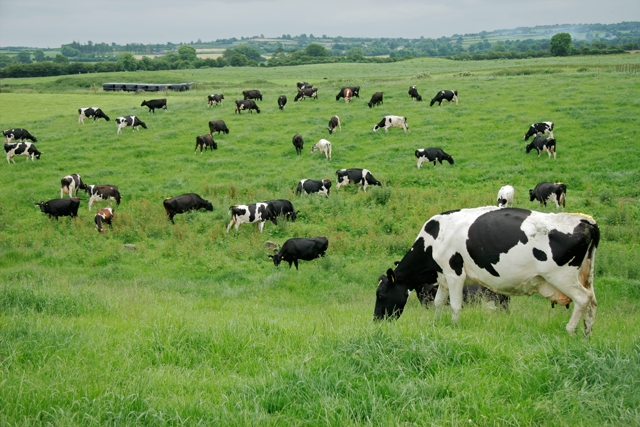Consider calcium
03 Jun 2022
PRODUCTION ADVICE & NRM NEWS - JUNE 2022 - ANIMAL HEALTH
By Emily Stearman - Acting District Veterinarian Team Leader
M: 0499 589 822 | E: emily.stearman@lls.nsw.gov.au

It’s that time of year again, cows and ewes are close to calving and lambing, and it’s shearing or crutching time for others. We are wanting to yard livestock for pre-lambing/calving vaccination but it’s wet, cold and stock may be off feed during a period of high metabolic demand. Consider calcium!
Calcium is highly important for smooth muscle contraction, deficiency can impact heart function and uterine contractions. It is also critical to the growth and development of the musculoskeletal system.
Cereal plant varieties are inherently low in calcium, while most pasture species are balanced for livestock. During rapid phases of plant growth, the high moisture content of the plant dilutes minerals such as calcium. Plant factors that reduce calcium in the diet of livestock are at high risk for creating poor health. There are three conditions to consider over the coming months which can occur when diets are low in calcium:
Lazy Calving
Cattle grazing lush pasture or crop at the time of calving are at risk of uterine inertia (lazy calving). Green feed is high in moisture and low in fibre. Fibre stimulates chewing, chewing increases the absorption of calcium from the diet. Low fibre diets where the plant is deficient in calcium, reduce calcium intake and therefore blood calcium. This problem often goes undetected until calving starts. Sub-clinically low calcium prevents effective contraction of the uterus, prolonging the birth of the calf. Calves are often born dead despite being fully formed and otherwise healthy.
Hypocalcaemia
Hypocalcaemia results from low dietary calcium in all the ways discussed above. The risk for hypocalcaemia is exacerbated during pregnancy, lactation and rapid growth phases in young sheep. Unfortunately, in our region, low calcium availability often coincides with the highest period of demand for livestock.
Affected sheep or lambs can appear bright and alert but are generally down and unable to rise. Where blood calcium is critically low, animals may appear dull, have muscle tremors or convulsions, and often have high body temperatures as a result.
When grazing a deficient diet any sudden increases in calcium requirement can induce clinical disease. This would include increased muscle movement at times of mustering, moving or yarding. Alternatively, extended time off feed for shearing, crutching or pre-lambing treatments are commonly fatal.
Prolonged calcium deficiency
It is not uncommon for grazing crops to be utilised during lambing, lactation and weaning. This extends the time on which rapidly growing lambs are exposed to a known calcium-deficient diet. A southern winter contains many overcast days, along with a naturally short-day length. Concurrently, rapidly growing cereal crops contain some anti-vitamin D factors, making Vitamin D poorly available.
Vitamin D is required for the absorption of calcium from the diet. Lambs require calcium to calcify their growing bones. The combination of prolonged calcium deficiency and poorly available Vitamin D results in soft bone, poor growth rates and bone fractures in extreme cases. This condition is known as rickets and results in significant production losses in cold wet winters.
What can I do?
Prevention is better than cure. Provide fibre in the diet, especially for cattle. Where livestock are grazing lush pasture or crop, the provision of hay or straw is essential.
For pregnant and lactating livestock grazing pasture, and all classes of stock grazing cereal crops, mineral supplementation is recommended. Stock-grade lime and coarse salt provided as a loose lick are recommended to reduce the incidence of calcium deficiency. The addition of Causmag to this lick can help to prevent sub-clinically low magnesium, maintaining growth rates and reducing the risk of concurrent grass tetany.
To reduce the risk of rickets, provide alternative pasture containing legumes, or sun-cured legume hay where possible or consider vitamin D supplementation if grazing cereals is unavoidable.
During high-risk periods, where possible avoid activities that reduce appetite, increase time off feed and increase the requirement for calcium.
If you have any concerns about the diagnosis, treatment or management of these conditions on your farm, do not hesitate to contact your local district veterinarian.